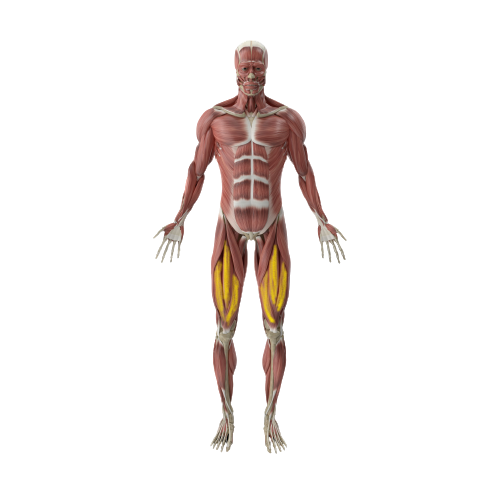The barbell back squat is a popular compound movement that emphasizes building the lower-body muscle groups and overall strength. It's the classic way to start a leg day, and is a worthy centerpiece to a lower-body training program. The squat is a competitive lift in the sport of powerlifting, but is also a classic measurement of lower-body strength. With the barbell racked on the traps or upper back, the emphasis is placed on the posterior chain but the entire body gets worked. The back squat can be trained in everything from heavy singles to sets of 20 reps or higher.
Benefits
- Adds size and strength to the quads, glutes, and hamstrings
- Requires back and core strength to maintain torso positioning
- Can be used to improve conditioning and cardiovascular health
- Considered by many to be "the king of exercises"
- Type: Strength
- Main Muscle Worked: Quadriceps
- Equipment: Barbell
- Level: Intermediate
Quadriceps

Directions:
- Begin by loading the bar appropriately and stepping under it, placing it across the back of the shoulders slightly below the rear deltoids. Squeeze your shoulder blades together and rotate your elbows forward, attempting to bend the bar across your shoulders.
- Remove the bar from the rack, creating a tight arch in your lower back, and step back into position. Place your feet in a wider-than-shoulder-width stance with the toes slightly pointed out and knees slightly bent. Keep your neck neutral. This will be your starting position.
- Descend into a squat by pushing your hips and butt backward. Continue down until the upper legs are at or just below parallel to the floor. Inhale as you perform this portion of the movement.
- Descend into a squat by pushing your hips and butt backward. Continue down until the upper legs are at or just below parallel to the floor. Inhale as you perform this portion of the movement.
- Drive-up through your heels, pushing your feet and knees out. Continue upward, maintaining tightness from head to toe, until you have returned to the starting position.
- Repeat for the recommended amount of repetitions.
Barbell Squat Images






